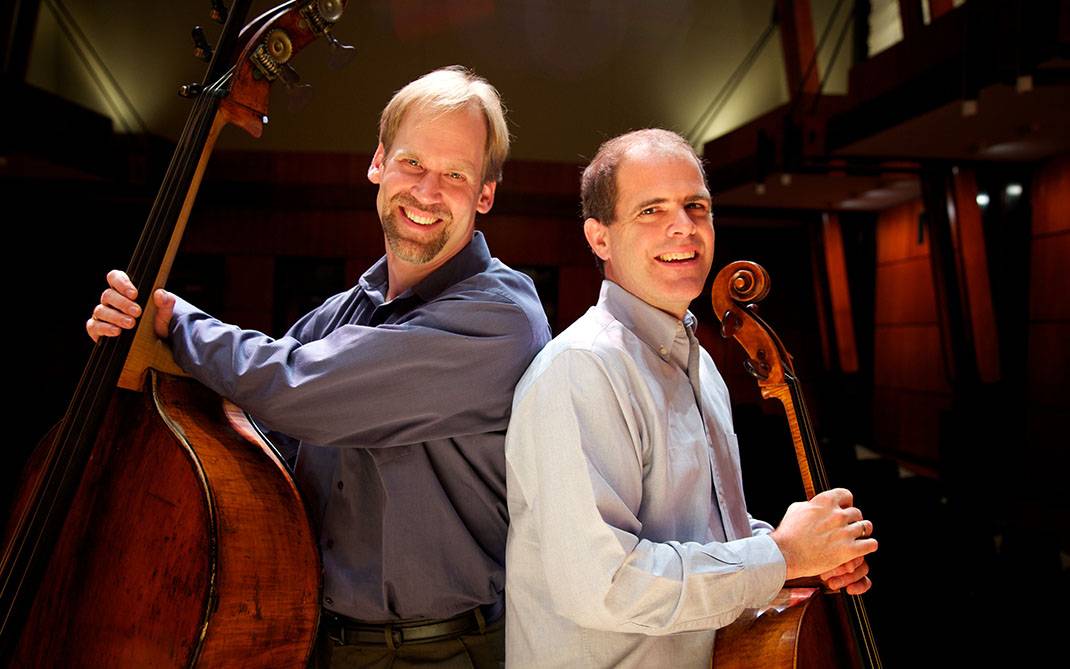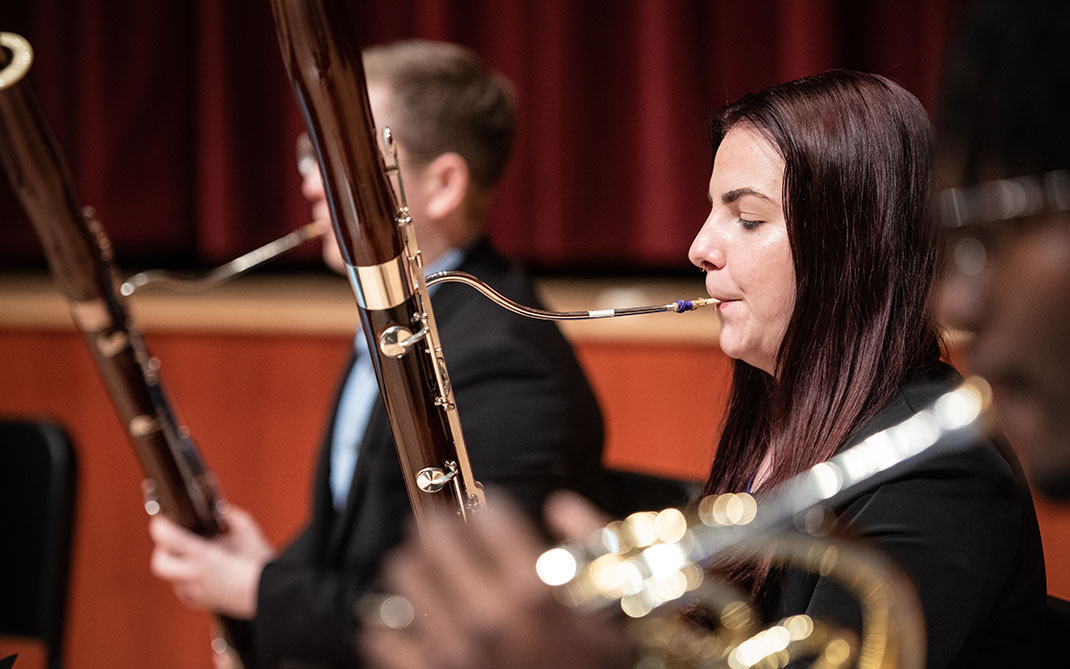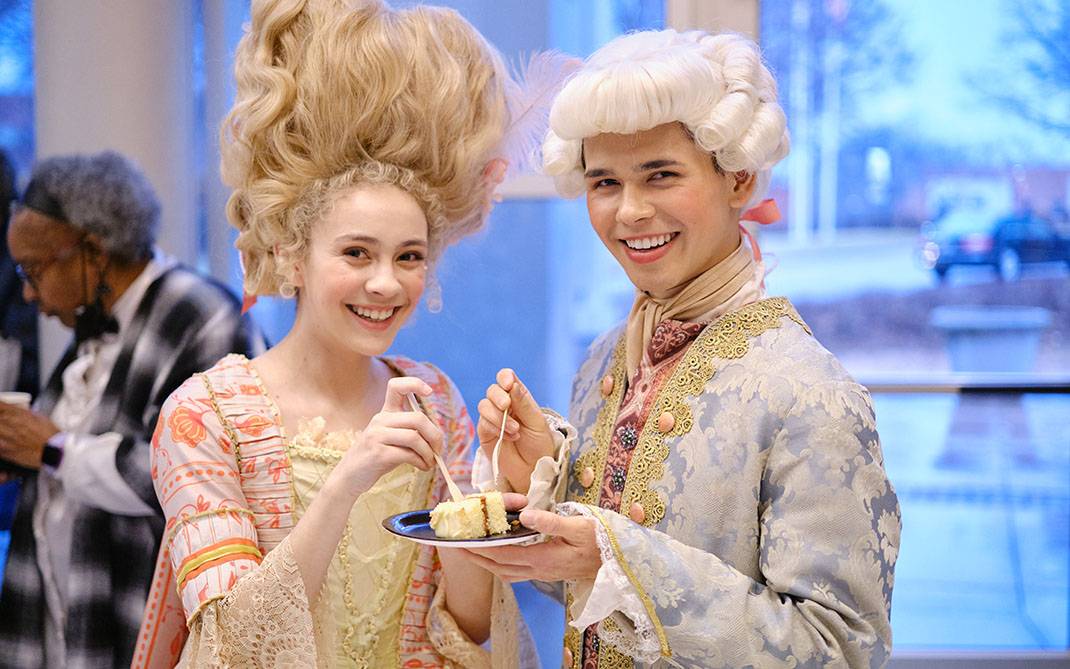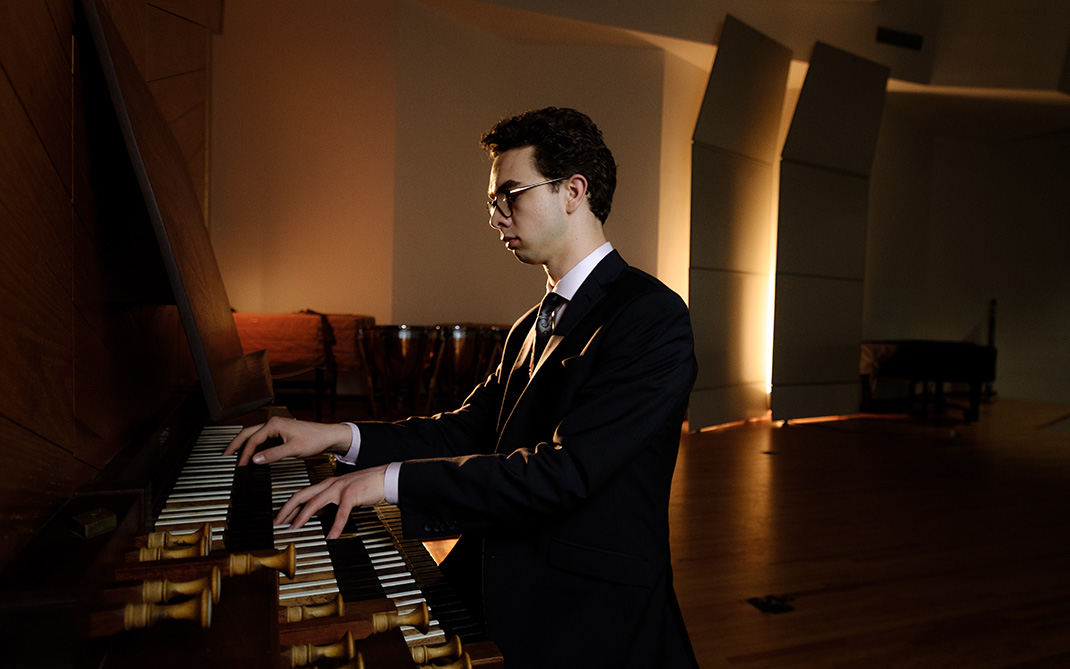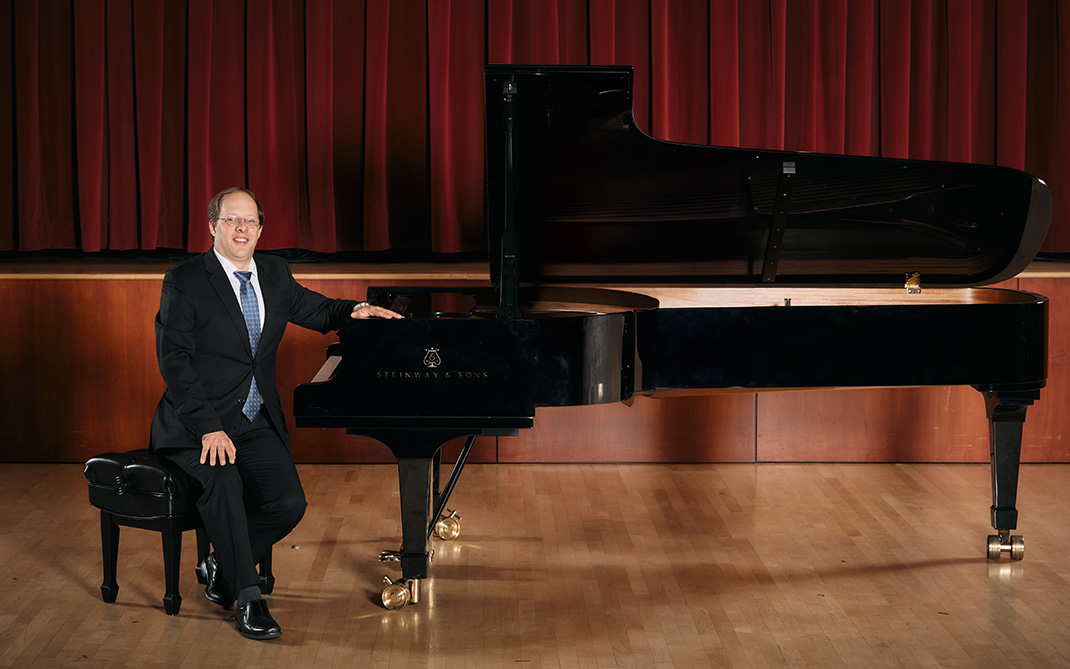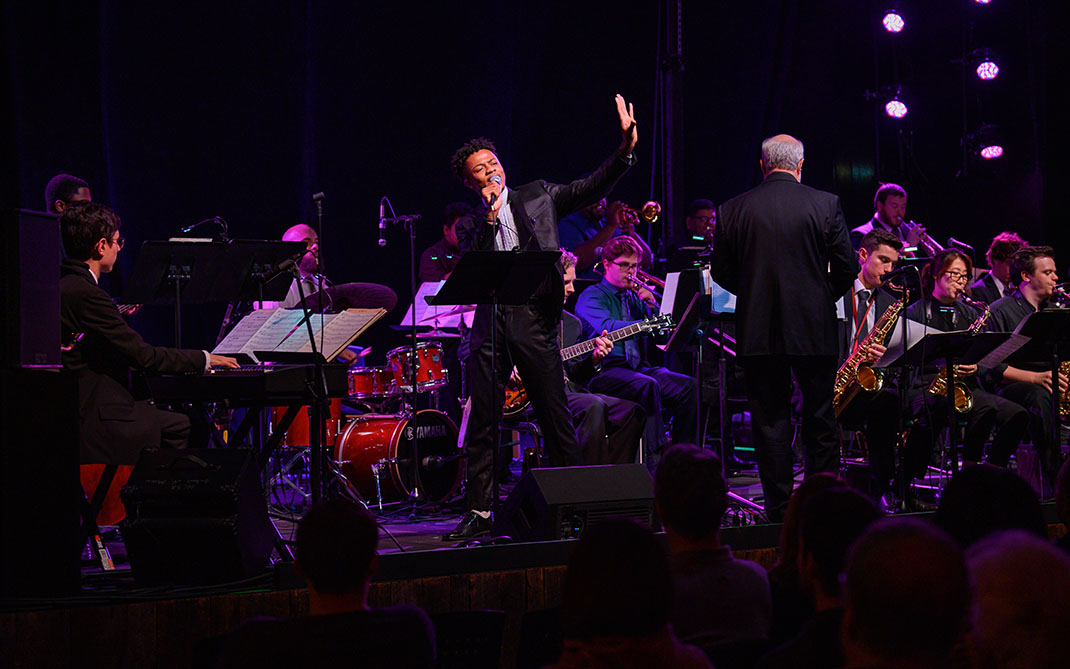Installation Address
President Ross; Senator Burr; Chairman Fennebresque; Chairman King; members of the University of North Carolina Board of Governors; distinguished colleagues, fellow chancellors and presidents; University of North Carolina School of Arts trustees, other members of our boards, deans, faculty, staff, students, alumni, supporters and volunteers; family, friends, and guests: thank you for the confidence and the trust you have placed in me to lead this one-of-a-kind institution. You honor me with your presence and inspire me with your dedication to our students. Welcome--all of you.
I am humbled by the task before us at a time of disruptive changes in higher education, and of changing business models for theater, film, music, and dance. Groundbreaking innovations in entertainment technology will dramatically affect how we teach, watch, listen, learn, communicate, and think in the months and years ahead.
Daunting as that may seem, I am profoundly grateful for this once-in-a-lifetime opportunity to build on the legacy of the seven presidents and chancellors who were installed on this campus before me. I am also mindful of the historic timing of this installation: The School of the Arts enrolled its first students 50 years ago this month.
Imagine those young aspiring artists arriving on our makeshift campus in 1965. To get them here, volunteers raised nearly one million dollars in a two-day telephone drive to establish the school in Winston-Salem. That’s the equivalent of eight million dollars today! The only building we had at the time was a vacant high school donated by the school board, with a gymnasium that had been repurposed as a theatre.
Our first president, a composer named Vittorio Giannini, left behind the status, security, and mighty resources of Juilliard to run a fledgling school with no long-term funding, no permanent staff, and no facilities or equipment suitable for a world-class conservatory. Recruited by Gov. Terry Sanford and writer John Ehle, he came to fill a glaring void in artistic training and education in a region defined at the time by images of racial violence, and widely seen as culturally backward.
Eager to spread the gospel of the arts, many of Giannini’s friends, acolytes, and artistic peers soon followed him to our pioneering city. And so began a half-century-long pilgrimage of accomplished artists and professionals who walked away from lucrative careers for a chance to shape the future of their industries by teaching rising generations at the conservatory of the American South. Since the mid-1960s they’ve been coming here the way our faculty, deans, provost, and I came here today.
Students flocked here then as they do now: to learn and apprentice with those who had already made a name for themselves. Teenagers from rural counties across North Carolina; from every state in the American South; from New York City, Chicago, and Los Angeles; and from Europe, Asia, and South America. Kids who had no access to arts education, no creative outlets, nowhere to fully develop their innate talents and realize their full potential. Aspiring actors, dancers, conductors, musicians, filmmakers, lighting technicians, storytellers, set designers, scene painters and so many others who never quite fit in anywhere until they came home to the School of the Arts.
I came here just last summer, full of idealism, but well aware of the tough realities we faced. I saw a storied institution that really needed to tell its story. I saw an advancement office that needed rebuilding. I saw opportunities to expand our base of support, drive economic growth in the city, and partner with global businesses on research and development. I saw a campus rattled by change, but somehow ready, willing and hungry for more. I’ve continued to listen and learn, now and as always, and to remember—even on the worst days—why I uprooted my life to come here.
I remember reeling in my office at Southern Living just moments before my first call with the recruiter for this position. I sat in silence with the door closed and locked for 15 minutes, trying to listen to what my inner voice was telling me. I enjoyed my role as the face, champion, and steward of such a beloved, iconic, and highly profitable cultural brand, and I’ll be honest: the negative press about massive budget cuts to the UNC system had me especially worried. But I knew, despite all external evidence to the contrary, that it was time to move on, time to serve a higher creative purpose, time to find greater fulfillment in a community that brought me closer to my roots as an artist, time to transition from a cutthroat business to a mission- and purpose-driven organization, time to pour my time and energy and passion into helping the rising generations. Time to give back. Time to leave the comfort zone of my longtime employer, Time Inc.
I answered the call from the recruiter that morning, and in doing so I answered a calling to serve. It had been a long time coming. For years I had silenced the inner voice that kept telling me to give my life to the kind of work where I could help others express themselves to the fullest, to grow and develop as humans, and find fulfillment beyond salary, title, or status.
I’m not saying money doesn’t matter. Getting a job, and making a decent living, must be a desired outcome of any college degree. But parents, faculty, administrators, boards, and legislators should aim for a much higher goal than getting students a job. What about getting a life?
What about getting an education that prepares you for a lifetime of creative thinking, powerful self-expression, and innovative problem solving? What about demanding returns on your tuition dollar that you can’t quantify in dollars and cents—intellectual or spiritual or emotional returns that are amortized and amplified over the course of our lives? These are worthy and ambitious goals that have been a given at universities for centuries. But the way it is reported and talked about today, you’d think students are machines we tinker with for four years and stamp out like robots to join today’s workforce.
Today’s workforce. It’s such a hot catchphrase it has become a cliché. If it’s artistic or philosophical inquiry, happiness, or meaning you’re after, you can save that for retirement. Forget art, theater, and poetry, we need training for today’s workforce! If you listen only to the loudest and most influential voices, today’s workforce has no use for artists. They just ignore the fact that arts and cultural goods and services contribute nearly 700 billion dollars to the national economy. Forty billion of that is right here in North Carolina!
We readily commit to funding STEM education—the acronym for Science, Technology, Engineering, and Math—because today’s students need greater scientific and technological literacy to function in our rapidly changing society and economy. That’s a fact. But when it comes to teaching or developing creativity, we debate endlessly and contentiously over whether or not we can afford to require our children to take a single art class before college. Here’s another fact: employers consider creativity one of the top three personality traits most important to career success, yet 80 percent of employers say they can’t find enough creative problem solvers.
You want to know why? Because there’s a letter missing in STEM, an “A” for Arts to spell STEAM. Instead of spurring creativity, we squelch it by divesting in the one field of study that increases and enhances human creative capital. Instead of feeding young spirits and fueling imaginations, we suppress them by allowing our children to gorge on the eye candy of whatever they find on their smartphones. We’re slowly, steadily malnourishing our whole society with our addiction to junk food for the soul.
The sciences sustain life. The arts, like faith, make it worth living. Every single day, mass culture bears down on us with mind-numbing distractions. We’re totally anesthetized by our screens and devices. We robotically strap on mobile blinders and search and browse and text and post our way through the hours. We’re drawn to whatever outrages or repels us the most in a world that seems to fetishize conflict, glorify violence, and worship vanity. By defunding the arts, we’re depriving of ourselves of joy, becoming immune to beauty, and devaluing the passion that makes us human.
I came here because this school unleashes creativity, beauty, passion, and joy with such unfettered abandon. People seem more alive here than in other places. There’s more focus, greater intensity, and a sense of dedication to a cause. Our students don’t earn degrees by learning how to pass rote courses and exams. There’s no phoning it in at the School of the Arts. Students have to show up emotionally, physically, and spiritually to make it through. That’s all on them, and that’s what they signed up for by coming to a conservatory.
It’s on us to honor their vocations, hone their talents, and develop their unique voices. It’s on us to instill them with the values and professional experiences any employer would want. It’s on us to provide every opportunity to collaborate, create, practice, rehearse and perform under real-world deadlines, pressures, and budgets. It’s on us to move this institution—and move we must—to the very leading edge of the industries and disciplines our students came here to learn. It’s on us to see the future out there and in them, so our students can meet and adapt to the needs of the arts and entertainment industry long after many of us are retired and gone. It’s on us to demonstrate the power of STEAM education in a country so narrowly fixated on STEM.
When we focus so intently on metrics that define success by test scores and first-year earnings, or when we foolishly chase the illusion of job security in a rapidly churning economy, we simply tune out the inner voice that often conflicts with what all the other voices are telling us. Voices of the press, our parents, friends, politicians, savvy marketers, strangers on social media. Even the voice of our own faith, whatever that may be, gets drowned out when everything’s blaring at you all at once from every direction and on every page and screen especially at such a formative, impressionable age. It’s all too easy to escape the noise by taking the path of least resistance, which all too many do right after college, only to discover later in life that they’ve headed in the wrong direction and it may be too late to turn back.
Our students, and artists in general, have a hidden advantage, something they might either take for granted or didn’t even know they had. I’m referring to a rare and special gift for listening. Our students listened, and they answered a calling that, for many, surfaced at a very young age. Many of them come here to try out their vocation, some as early as community school. The ones who enter our high school arrive so focused and dedicated to their art, you’d swear they can’t be teenagers. By the time they enter the conservatory as freshmen, they already know what they were meant to do with their lives. For most it’s the start of a lifelong journey in the arts. For others it leads to places they never expected. At an alumni gathering last summer, I met several successful doctors, lawyers, physical therapists, and other professionals, all 1990s graduates of our school of dance. Most of them danced professionally for a while, and when it came time to transition, they applied all the discipline, practice, intention, physical stamina, and sheer will they developed as dancers to their graduate studies, and to the challenges they’ve faced in courtrooms, with patients, and on corporate teams. I’ve talked to graduates of our School of Design & Production who worked for years as theater techs and now design user interfaces for interactive media products. A recent graduate of our School of Drama works as a senior project manager for Google—he told me how the complexity and endless hours of staging plays for major public performances in school gave him an edge over his Ivy League peers to oversee fast-track, high-stakes initiatives in overseas markets. That’s STEAM education in practice.
There’s always that fearful, agonizing moment of truth in one’s life when we must chart our own course. No matter what anyone has to say about it, only you will know if you’re headed the right way. If that direction leads to the School of the Arts, we’ll all be here to guide, nurture, and protect you on a journey where you can do your best work and become your best self.
We’re here to serve our students, but we also have a responsibility to tend to the faculty and staff who are the backbone of this place. Many of our teachers have made great sacrifices to work here, and they shouldn’t have to. It’s well known that we have some of the lowest paid faculty in the UNC system. Many could instantly increase their pay at peer institutions. Retention and recruitment worries keep me up at night. Excellence and expertise have a price, and are worth every penny, and many other states are now willing to pay for it. We must also recognize the staff that supports us behind the scenes in so many ways, like processing mountains of required paperwork or assisting our students. Those who mop the floors of our stages and studios further our mission as much as anyone else by providing a clean slate—literally—for our artists to hone their craft. We owe the people who work here the same opportunities for growth and development that we provide to emerging artists.
We can start by making some long overdue changes and enhancements to our living, working, and learning environment. Our brand-new library and new digital media building are hugely beneficial additions to our campus. But we must act now to develop plans and resources to transform our rapidly aging performance facilities, and create an immersive entertainment space that engages 21st Century audiences. We must launch programs and initiatives that drive creative incubation and innovation for our students, alumni, and the dozens of companies that recruit here every year.
We must expand our plans and vision beyond campus into the Gateway and downtown, where sensitive urban infill can catalyze arts-based economic development and improve the quality of place in the community that willed us to be here for art’s sake.
We must honor the efforts of all the volunteers who made phone calls to raise money 50 years ago, and fulfill the vision of Terry Sanford, John Ehle, and Vittorio Giannini to become a leading cultural institution in the South.
There’s good art and bad art, stuff you see all around us that you love or hate or never even notice, and occasionally think to yourself “I could’ve done that!” Then there’s great art—the stuff that moves or haunts you to the core. Great art speaks to us from unimaginable depths, and strikes us with a beauty that seems otherworldly. Great art overshadows and overpowers the harshness and hardships of life. It sharpens and deepens our perceptions, and connects us to a world way beyond ourselves, as long as we’re open to it.
For 50 years the School of the Arts has aspired to great art. Let us cherish and support this institution for the next half-century, and never stray from our founding mission born of a good and earnest want for all of us to experience and appreciate the overwhelming fullness, inspiration, joy, and passion of life.
Thank you.
Installation address
September 25, 2015
